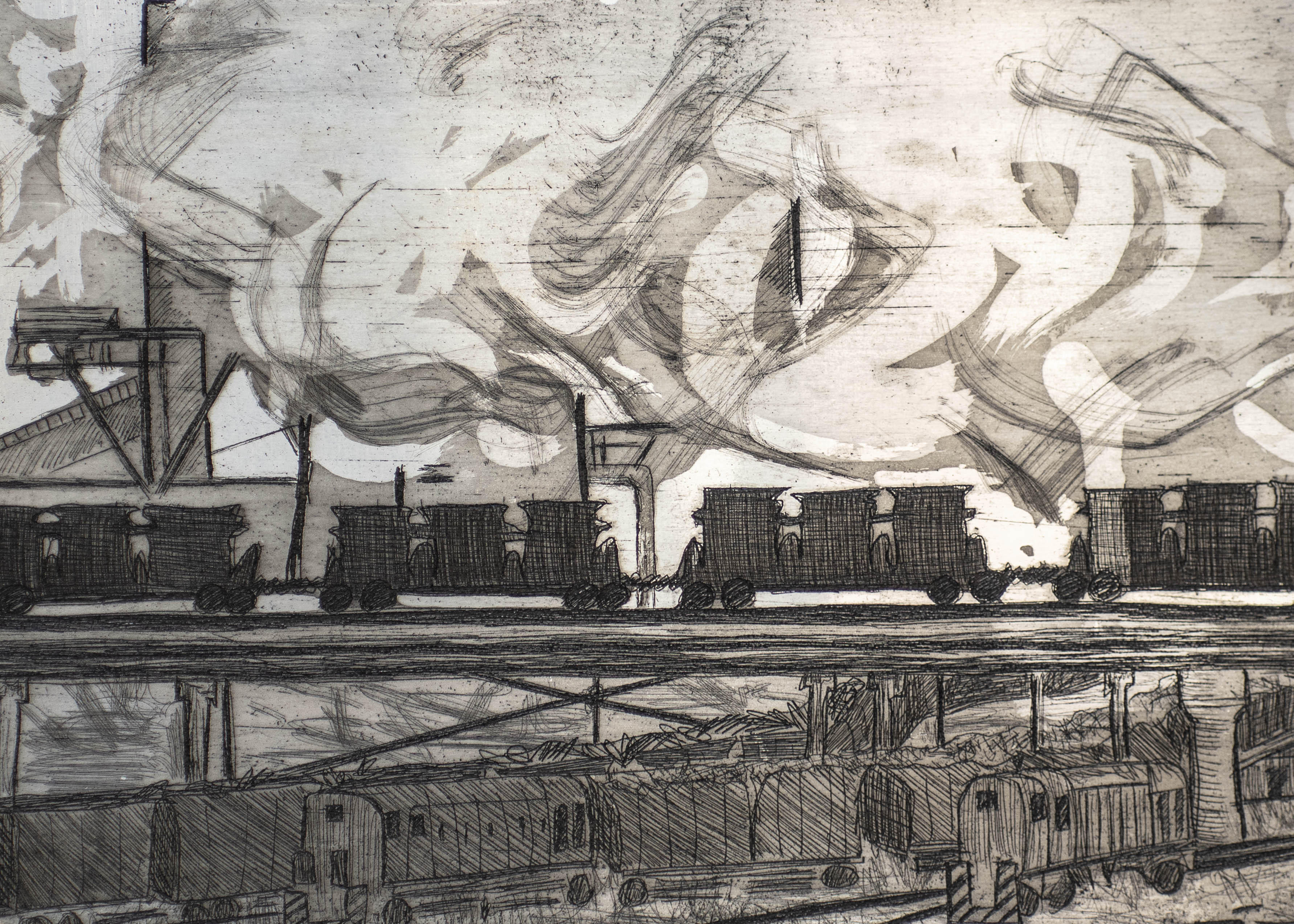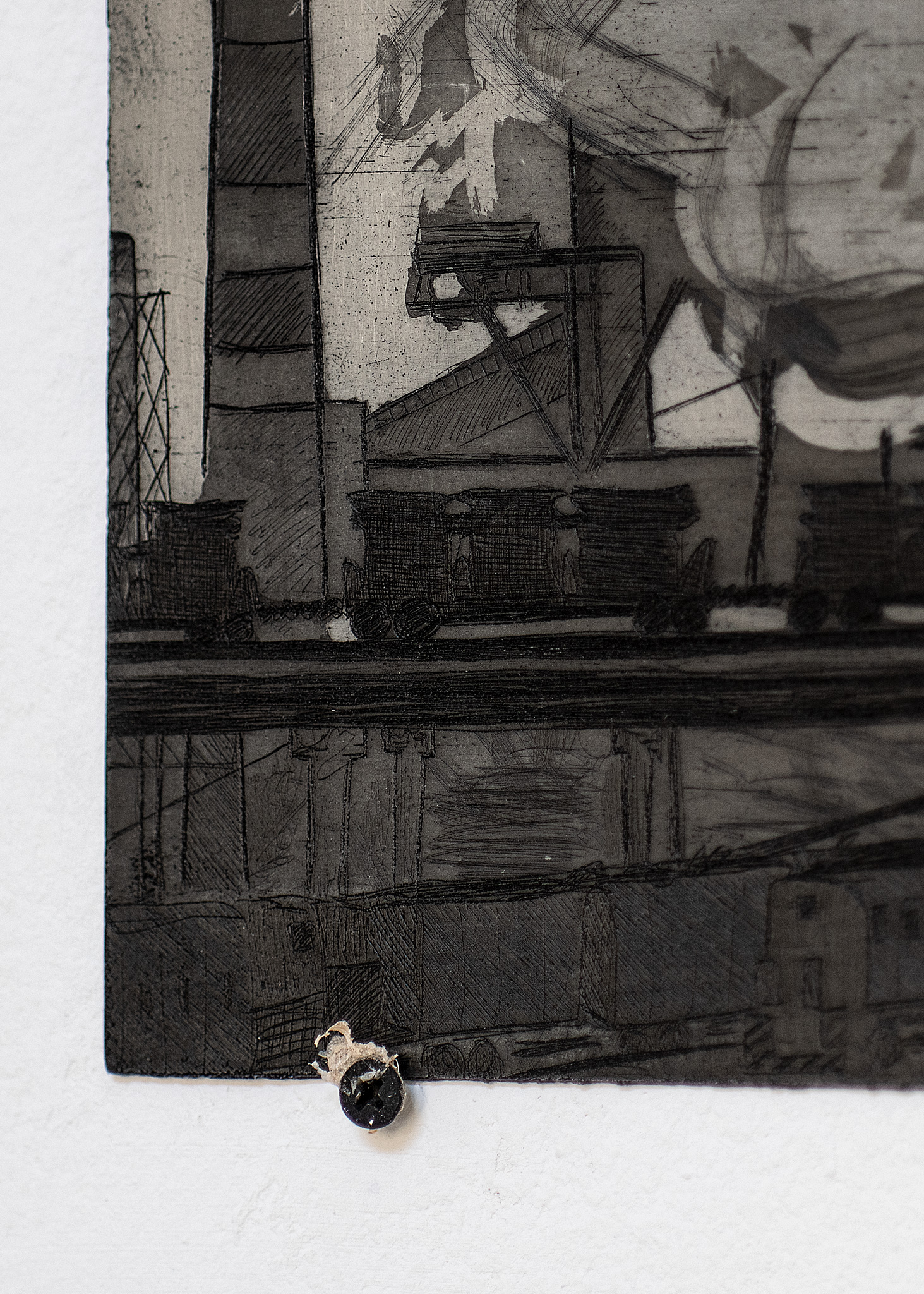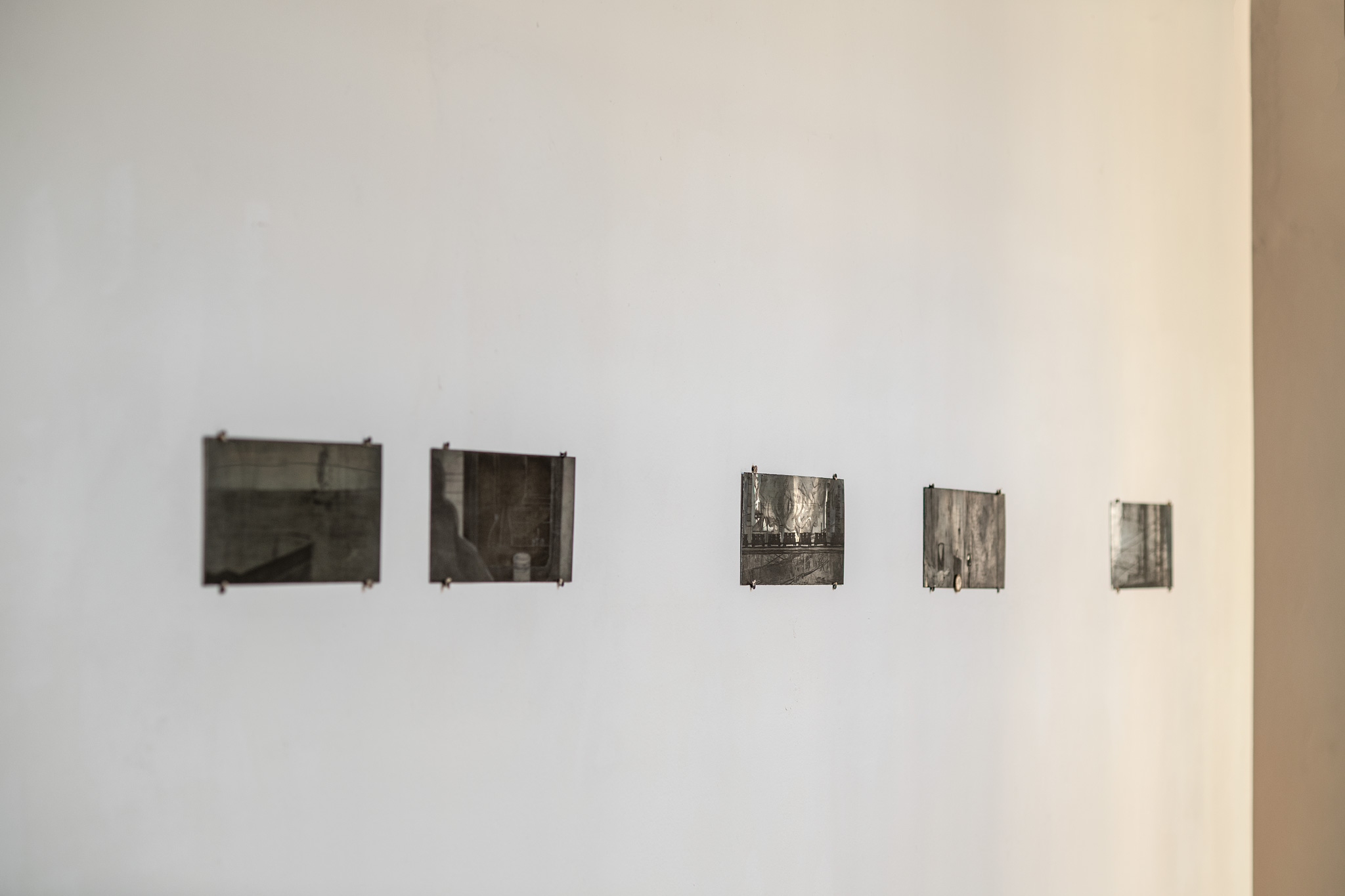IN A MOMENT THINGS WILL CHANGE
(WITH ALL OUR SOULS, EVEN THOUGH YOU HAVE NON)
2022-2023
5 zinc plates 15 x 38 x 0,1 cm, black oil-based paint, acid traces, asphaltic
bitumen, glue, sawdust, 20 sheet-metal screws, dead fly, Russian 10 rub. coin
Five dysfunctional zinc plates are covered with dry oil paint, which in its liquid form is
used to make print copies,
therefore their proper production is unachievable.
It is
something that remains with you. A permanent malfunction of a body.
The dead can’t be discarded or forgotten. You live with them, sometimes even for
them.
Cargo 200. The socio-political notion, originally a military code name, appeared in
wartime at the end of the 20th century. A multitude of coffins made out of zinc,
packed
in wooden boxes for transportation purposes.
Lower speed of decomposition, no
cadaveric alkaloid, no inconvenient ugliness, no personhood of
a formerly ‘valuable'
body. Just tags and the gleam of metal. ‘200' states for the maximum weight in
kilograms for an aircraft to transport the dead.
The notion, which was initiated more than 30 years ago, is still present. 2022 (1979) - ? (1989).
Can the late USSR be other than geopolitical, instead mutate into a sociocultural
phenomenon?
Cargo 200. Also known as a film produced by the Russian film director Alexey
Balabanov. Released in 2007. It tells a story of a rural city in the USSR during the times
of the Afghan war (1979 - 1989). Most of the characters in the film try to talk about such
topics as love, youth, hope, and happiness,
but all of that works as ignoratio elenchi or
strawman fallacy. Love is depicted through torture and rape, adolescence as a proposal
to use
others for personal benefits, hope and happiness as being drowned in alcohol
and violence.
Ignoratio. Ignoring as a norm. Governmental negligence of the past events and of life
itself. Only (re)production of dead bodies driven by personal interests.
Empty space with zinc plates depicting landscape-like scenes taken out of Balabanov’s
movie. Presented screenshots show no human images,
only their fragmented traces: a
blood stain, a shadow, glasses with drinkable fluid, a hand, industrial factories, a
transport system.
All the plates contain images that are flipped horizontally. All the
plates are burned with asphaltic bitumen dust and etched with acid
to correctly achieve
the purpose of further print reproduction and distribution of the final product.
1979. 1991. 2007. 2014. 2022. What is left for now? To still try, while being gassed by
the (Moment) glue, to forget about being screwed to the wall.
















